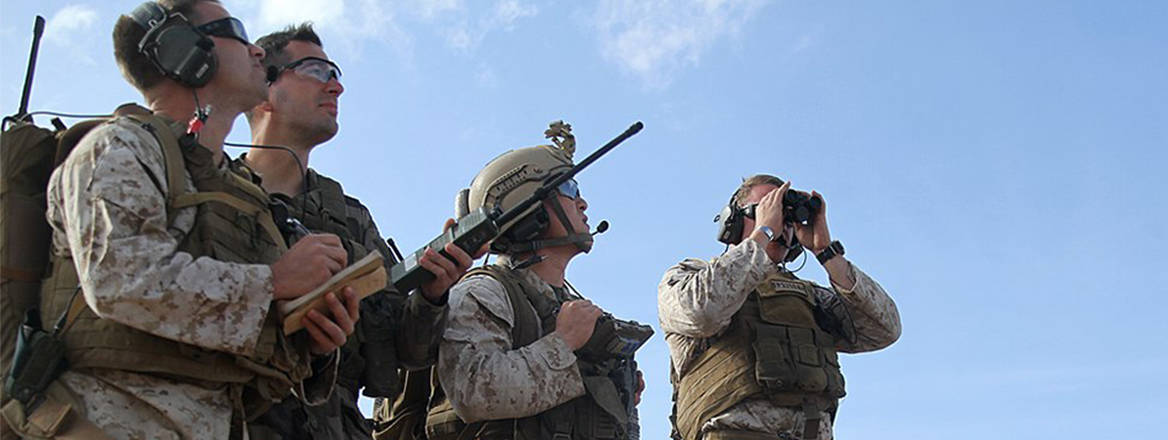Supporting Command and Control for Land Forces on a Data-Rich Battlefield
Forces that can leverage battlefield hyperconnectivity capabilities are likely to secure a competitive advantage over those that cannot. This paper seeks to explain what is driving changes to land forces’ command and control, the enterprise architecture that best supports the emerging requirements, and the implications for how command is practised.
Download the Special Report
The maturation of an ecosystem of data bearers and data management tools means battlefield hyperconnectivity is now realisable for militaries. Forces that can leverage these capabilities are likely to secure a competitive advantage over those that cannot. However, adopting these technologies requires a series of changes in how land forces conduct command and control (C2). To that end, this paper seeks to explain what is driving changes to land forces’ C2, the enterprise architecture that best supports the emerging requirements, and the implications for how command is practised. The foremost drivers of change are that:
- Armies that achieve greater situational awareness will have a competitive advantage.
- Situational awareness is achieved by moving relevant data between both units at echelon and sensors and effectors to enable forces to converge their efforts.
- Data relevance must either be determined by pre-agreed prioritisation or by analysis conducted at higher echelon.
- Latency in data transfer must be minimised for control of effects.
- Latency may be high for command of the force, but the picture must constitute as complete a data set as can be reasonably assembled.
- Low-latency, high-bandwidth communications impose an unacceptable draw on power for most tactical units, which must support low-latency, low-bandwidth communication to maintain situational awareness.
- The concentration of analytical capacity at higher echelons exposes the formation to an unacceptable degree of risk from long-range fires unless these elements can be dispersed.
- Dispersion demands the automation of a significant proportion of headquarters tasks.
- Automation demands a bearer-agnostic heterogeneous data ecosystem for the force, the remotely accessible nature of which also makes it vulnerable to cyber attack.
- Any future C2 architecture must degrade gracefully and in a predictable manner under constant disruption of the electromagnetic spectrum (EMS).
Envisaging a single architecture that can support all requirements in future military networks is a mistake. Instead, it is better to design future land forces’ communications on three network types:
- Tactical networks aimed at enabling lateral situational awareness, demanding high assurance, low bandwidth and medium-latency traffic. These are best delivered through mobile ad hoc networks (MANETs).
- A fire control architecture able to move ISR collection beyond line of sight through a contested EMS. This is best delivered by a bearer-agnostic heterogeneous network governed by a prioritisation stack delivering low-latency, high-bandwidth communications, theorised as a kill web.
- An operational command network through which headquarters can distribute orders and supporting information, and gather situation reports from across the force that require moderate assurance of access, can function with high latency and offers medium bandwidth. This is best delivered through a combat cloud, accessed through satellite bearers.
Although the tactical situation means that these networks should not be fully integrated, it is critical that appropriate data can pass between them. What distinguishes them is their bearers and how data is managed on the system. It is therefore important that common data standards are used to enable information egress between these three network architectures.
The adoption of such an architecture would have some implications for how command is exercised.
First, it would be important for commanders to exercise greater command discipline because the architecture would give them sight of (and the ability to direct) sub-tactical activity. Used properly, this access would be invaluable in helping them to allocate and distribute their resources and reserves. However, it would also be disastrous if operational commanders were drawn into interfering with tactical activity.
The structure would also change how headquarters function because dispersion and disaggregation, while necessary to ensure survivability, would isolate teams and make it difficult for a chief of staff to maintain a headquarters battle rhythm. It would therefore be crucial for different teams to actively strive to collaborate and to contribute where possible, rather than standing up and down in sequence.
The system would also depend heavily on AI to drive prioritisation and assist smaller staffs to plan and fuse information. Trust in these tools would be critical and training would be required to ensure their proper employment. Most of the time, it would not be viable to have a human in the loop or to have personnel understand how AI reached its decisions. For this reason, it would be necessary for AI tools to have clearly defined purposes so that confidence could be maintained by assessing them against their results. Human supervision would remain on the loop to provide assurance.
Assurance of the architecture would also be critical to ensuring that personnel remained confident in it. This would require active cyber defence, as well as a shift in mindset from an expectation of absolute security to an appreciation of relative security. The expectation should not be that the communications architecture is sufficiently robust to always operate at peak efficiency but should instead be anticipated to be continually disrupted. Troops must therefore use its benefits as a force multiplier rather than relying on its outputs as a crutch.
Finally, such a C2 architecture would render the EMS a plane of manoeuvre and the force’s posture would need to shift from minimal emissions to one in which emissions were continuous, but ambiguous. Force protection would depend on active enemy kill chain disruption rather than passive concealment. A beareragnostic approach would also mean that assurance of access to communications would need to be fought for and resourced. Units would proactively plan to fight for connectivity levels, rather than simply being forced from primary to alternative, contingent and emergency communications protocols based on adversary activity.
WRITTEN BY
Dr Jack Watling
Senior Research Fellow, Land Warfare
Military Sciences


